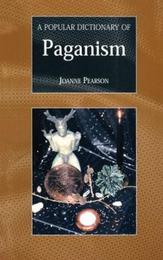
|
A Popular Dictionary of Paganism
Paperback
Main Details
| Title |
A Popular Dictionary of Paganism
|
| Authors and Contributors |
By (author) Joanne Pearson
|
| Physical Properties |
| Format:Paperback | | Pages:176 | | Dimensions(mm): Height 216,Width 138 |
|
| Category/Genre | Ancient religions and mythologies |
|---|
| ISBN/Barcode |
9780700715916
|
| Classifications | Dewey:292.003 |
|---|
| Audience | | Undergraduate | | Postgraduate, Research & Scholarly | | Professional & Vocational | |
|---|
|
Publishing Details |
| Publisher |
Taylor & Francis Ltd
|
| Imprint |
RoutledgeCurzon
|
| Publication Date |
1 August 2002 |
| Publication Country |
United Kingdom
|
Description
This dictionary is a glossary of terms and a reference work whose entries cover the complex phenomenon of contemporary Paganism. Paganism is now a well-differentiated area of religious growth with important elective affinities with feminism and ecological awareness, and is enjoying increasing public attention. The dictionary is intended for readers interested in Pagan thought and practices, Pagan practitioners, social workers and teachers who come into contact with Pagans and their children, and students in the university sector. There are very limited reliable resources available for students and researchers, despite the increasing popularity of the study of Paganism. This dictionary is therefore a valuable addition to the available academic literature. In addition to courses specifically focussing on Paganism, courses on women and religion, on religion and the environment , on environmental philosophy, and on nature religion will find this book of relevance. The dictionary contains definitions of Pagan terminology and information on key concepts and figures, with a detailed introduction setting out the difficulties in providing definitions of terms whose meanings are often renegotiated by each individual Pagan. This substantive overview essay frames the volume and illuminates the context of the individual entries, which encompass the wide scope of the field covering key figures and concepts from the most well-known Pagan religions: Wicca (witchcraft), Druidry, Asatru, non- aligned Paganism, Goddess worship, and shamanism. Names of appropriate deities are included on the basis of their familiarity and usage (e.g. Aradia and Diana in Wicca; Ceridwen withing Druidry; Odin in Asatru), whilst technical terms and practices, such as invocation' are given underlying definitions and cross-referenced to alternative definitions which are relevant to a specific religion.
|